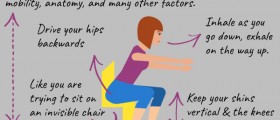
The piriformis muscle helps with the rotation and abduction of the thigh. During walking or similar motion, the piriformis lengthens as a result of external rotation being converted into internal rotation. Lengthening is followed by contraction - both after the initial lengthening and as the opposite leg swings into motion.
Importantly with regard to this condition, the sciatic nerve passes by and through the piriformis. Thus, any problems with the piriformis may result in the experiencing of pain in any area associated with the sciatic nerve, such as the gluteal region. Piriformis can occur as a result of inflammation caused by gluteal damage. This can chemically affect the sciatic nerve. Many medical professionals consider piriformis syndrome to be a side-effect of a problem with the sciatic nerve. Some physicians have advanced the theory that a blunt impact to the buttocks may cause hematoma and subsequent scarring between the sciatic nerve and the external rotators. Inflammation and entrapment of the sciatic nerve can also cause piriformis syndrome.
Regarding the hyperfunction of the muscle, this can be caused variously by the release of serotonin, histamine, prostaglandin E, bradykinin as well as the extravasation of blood.Recovery and Rehab
If a patient is diagnosed with piriformis syndrome, it will be necessary to begin some kind of physical recovery plan. This plan may start off with simple strengthening exercises. Most likely, these exercises will be centered around the gluteal and piriformis muscles. As the condition lessens in severity, the patient should look to incorporate some light physical activity and specified training into the recovery plan. While doing so, it is important to focus on posture and the mechanics of the pelvis. This may involve changing one’s choice of footwear or seeking an orthotic consultation, both of which should help correct any misalignment of the pelvis.
During rehabilitation, one should focus on building flexibility. Remain wary of overexertion when sprinting or hill-running. Make sure to warm up - and cool down - correctly. Ensure also that you adhere to a daily stretching routine, as this will help avoid a recurrence of piriformis syndrome. A return to full activity is conditional on the severity of the injury.

















Your thoughts on this
Loading...